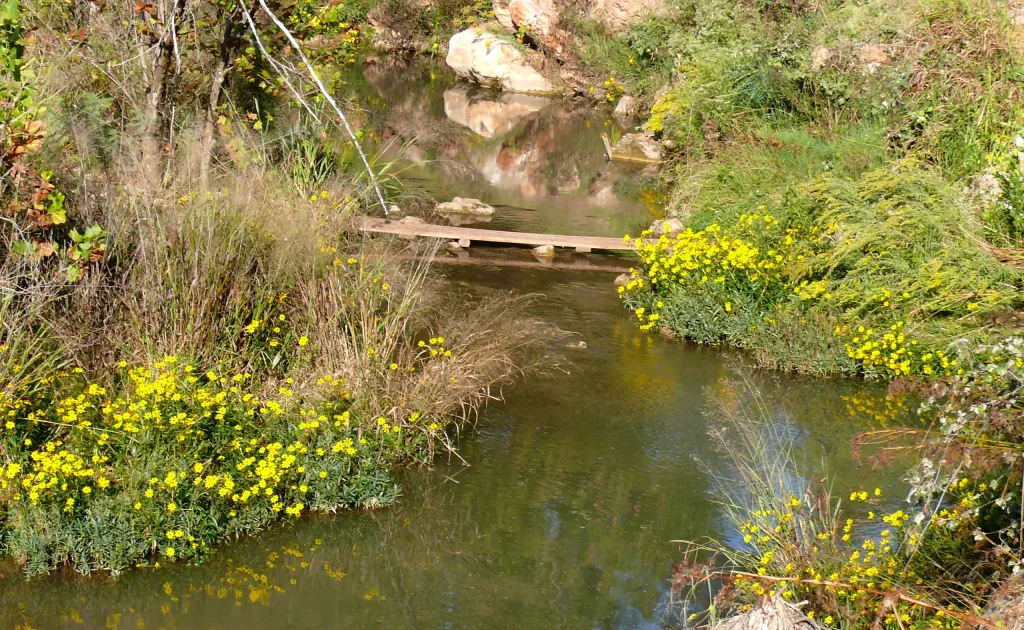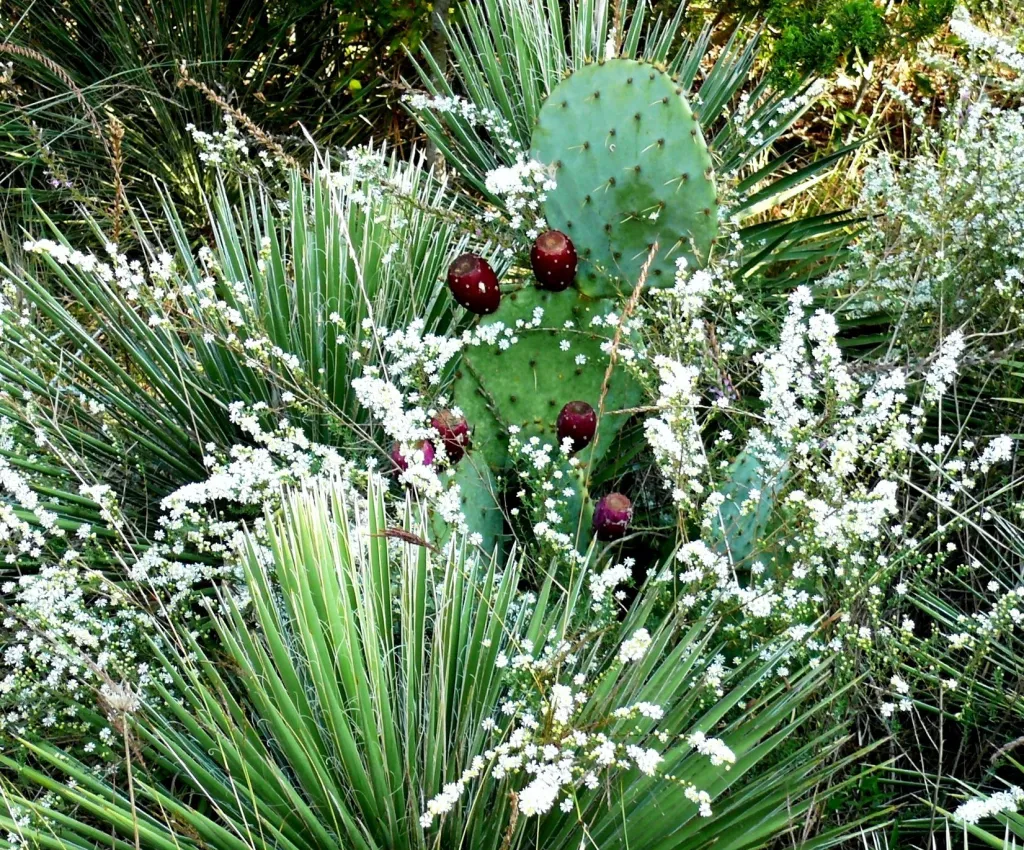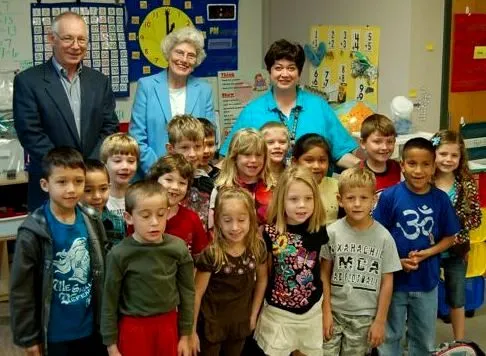There were at least 65 different species of native plants in bloom when Delmar Cain and I visited the trails at the Fredericksburg Nature Center (FNC) in late October. This ten-acre jewel of a nature park on the southwestern edge of Fredericksburg is a great place for native-plant lovers to visit because of the high diversity of plants in one small area.

There are some native-plant species at the FNC not found in our area because the geology is different. During the Early Cretaceous, at the same time the Boerne region was a shallow-marine shelf, the Fredericksburg region was a land area where streams deposited sediment eroded from the Llano Uplift. Today, the Lower Cretaceous non-marine sandstone and conglomerate crop out at the FNC, and this bedrock weathers to relatively acidic soils. In the Boerne area, the bedrock of Lower Cretaceous marine limestone gives us calcareous soils.
The FNC grew out of Bill Lindemann’s desire to convince the Fredericksburg city council to set aside a natural area for birders. Bill found the perfect city-owned tract along Live Oak Creek adjacent to Lady Bird Johnson Municipal Park.

Bill Lindemann was two-time President of the Native Plant Society of Texas, and he is a highly respected birder who also knows butterflies and dragon flies. He immediately recognized that this plot of land could be much more than a birding trail. It has the habitats to be home to a diverse fauna as well as a rich native flora. It is an ideal place for a nature center.
Luckily, the city had no other plans for these acres, and the mayor and councilmen liked Bill’s idea of developing nature trails there. With the help of the city and several members of the Fredericksburg Chapter of NPSOT, Bill began to develop the Fredericksburg Nature Center. Soon members of the Hill Country Master Naturalists and other volunteers joined in. The FNC was officially founded in 2000.
Today the ten acres has well-maintained trails through eleven distinct habitats: postoak savannah, wetland, riparian, old-growth live oak woods, native prairie, cedar brake, lake, mud flats, lake island, and springs and seeps.
The Friends of the Fredericksburg Nature Center has published a checklist for wildflowers and another for cacti, ferns, grasses, and trees. The wildflower checklist has 266 species with more soon to be added. There also are lists for the birds, butterflies, dragonflies, and damselflies.
The FNC has become the center for all sorts of nature activities, including a monthly lecture series and many school field trips and outdoor programs. The Lady Bird Johnson Wildflower Center in Austin has recognized the FNC as an affiliate organization.
Native-Plant Watch Makes Award
Last spring the Boerne Chapter established Native-Plant Watch, a program for assisting hands-on education about native plants in Boerne elementary schools. For this school year, the $500 award went to Donna Oates, a first-grade teacher at Kendall Elementary.
Mrs. Oates and her students will plant and maintain a garden of native plants that attract hummingbirds and butterflies. This will give the students insight into the interdependence among living organisms in the natural ecosystem.
They also plan to propagate native plants in their greenhouse. Students will be able to take plants home to grow in their own gardens.



